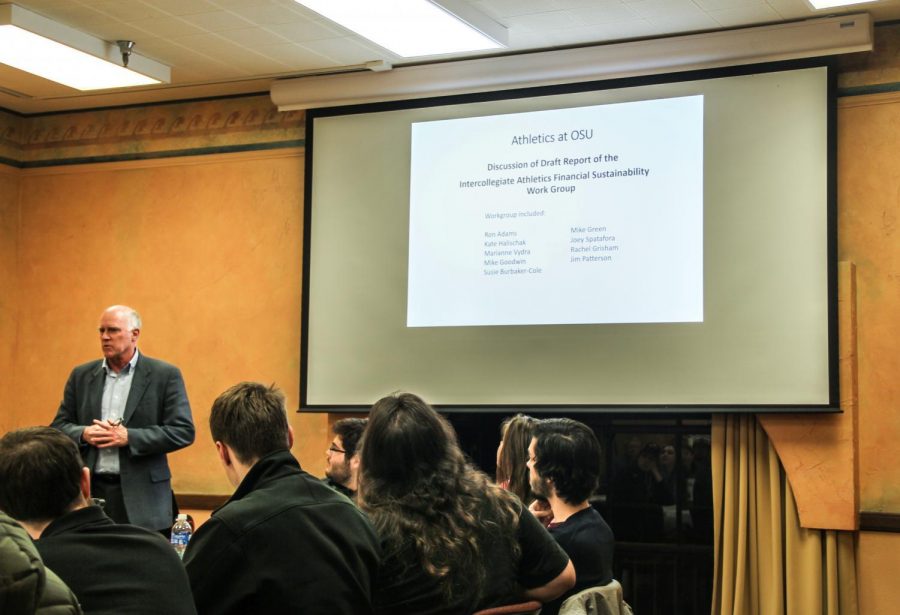OSU athletics has been operating in the red since 2014, but plans to balance the budget are being proposed
December 5, 2016
After running at a deficit since fiscal year 2014, the Oregon State University athletic department is seeking solutions to bring operations out of the red in the coming years.
The Intercollegiate Athletics Financial Sustainability Work Group has been auditing past budgets and determining where the athletics department has been losing revenue over the last several years.
Sherm Bloomer, the director of budget and fiscal planning for OSU, presented the draft report from the committee to the ASOSU House of Representatives on Nov. 30, with plans for further presentations for various groups in the coming weeks announced as well.
It was explained that ticket sales, and with them gifts and donations, have been declining in recent years, among season tickets especially.
While the committee points to several factors that led to the operating deficit overall, Bloomer said that the overall budget has not been mismanaged.
“It wasn’t an issue with management decisions,” Bloomer said. “We lost
the ticket revenue.”
Some of the recommendations Bloomer and the committee have include a call for a reduction of athletic operations of at least $1.1 million dollars a year, for all new facilities to no longer be built on debt backed by the university, to renegotiate local media and TV rights and deals, increase ticket revenues by about $1 million and to possibly have more facilities be sponsored.
One contributing factor to the deficit is the fact that OSU’s football team was on the decline through the same time frame. Football is the sport that allows all of the major Division 1 universities to have most of, it not all of their other sports operate in deficit, Bloomer said.
According to Bloomer, even in the worst year when OSU did not win a conference game, the football team still brought in over $15 million from tickets and television deals. However, enough revenue has been lost among all programs to bring the department’s operations into a deficit overall.
Currently, OSU has 16 Division 1 sports programs. Pac-12 membership rules demand that a university has 15 or higher to remain in the conference. The plan did not call for the cut of any program, and Bloomer stated that athletics as a whole were an integral part of OSU.
“Athletics has a role in the mission statement of this university,” Bloomer said.
In addition to the university, athletics also play a large role in the surrounding community, Bloomer said.
The coaching staffs’ pay for all sports is at or below the median level among the major conferences in Division 1, Bloomer said, and the overall expenses were in the bottom third of major conferences.
Bloomer said that the OSU Foundation will need to get fundraising for athletics back to around $10.6 million, a level they have reached before. In addition to this, there is a need for OSU to contribute $8 million from the general education fund, twice as much as is given at this point to athletics in the next year.
“There’s a logic in the $8 million number,” Bloomer said. This would allow for the university, including rec sports, to have more access to athletic facilities.
Bloomer stated that he and the committee expect OSU athletics to be operating in the black within the next three fiscal years. The committee will meet with OSU President Ed Ray on Dec. 15 to get his final approval of the plan.






















































































































